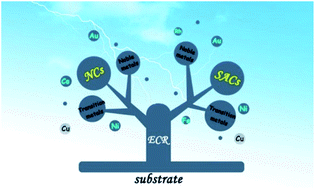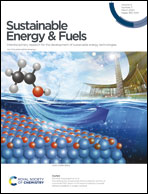Electrochemical CO2 reduction: from nanoclusters to single atom catalysts
Abstract
The balance of the carbon cycle is destroyed by the increasing emissions of greenhouse gases into the Earth's atmosphere, which limits the sustainable development of human beings. Electrocatalytic reduction of CO2 under ambient conditions is an effective method to solve this issue by converting CO2 to value-added chemicals or fuels. In recent years, metal nanoclusters (NCs) and single atom catalysts (SACs) have received much attention in electrochemical energy conversion. In this review, we mainly focus on the electrocatalytic properties of noble metal and transition metal catalysts at a sub-nanometer or single-atom scale, with special attention paid to their catalytic activity and selectivity as well as the catalytic mechanism towards different products. Their main advantages and challenges are also highlighted. The purpose of this review is to give a comprehensive understanding and inspire further exploration of more effective catalysts for electrochemical CO2 reduction.

- This article is part of the themed collection: Sustainable Energy and Fuels Recent Review Articles


 Please wait while we load your content...
Please wait while we load your content...